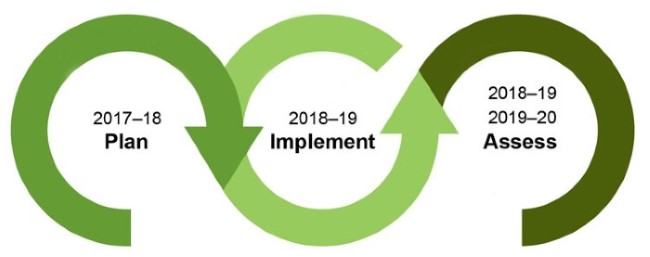What revisions to the standards of education and training mean for approved programmes
We are undertaking a phased assessment of the revised SETs for approved programmes. From the standards going live in September 2017, education providers have been advised to:
- We will assess whether existing programmes meet the revised SETs via the annual monitoring process in the 2018-19 or 2019-20 academic year.
- From the 2018-19 academic year, we will assess all major changes to existing programmes against the revised SETs.
We will communicate our requirements when we contact education providers with information about their next annual monitoring audit submission. This information is usually sent early in the academic year. Education providers do not need to proactively inform us of changes linked to the introduction of the revised SETs before their annual monitoring submission.
We have introduced new standards requiring:
- Interprofessional education – that all learners have the opportunity to learn from and with professionals and learners from other relevant professions
- Learner involvement – that learners are able to contribute to the programme in some way
- Support to enable learners to raise concerns
We have made other changes across the standards:
- Strengthened how our standards of conduct, performance and ethics are embedded into curriculum and assessment.
- Updates to terminology to ensure it is broad, inclusive and up to date. For example, ‘learner’ has been preferred to ‘student’ and ‘practice-based learning’ has been preferred to ‘practice placement’. We are not prescribing that education providers adopt this terminology, but consider that it is non-prohibitive to emerging organisations and models of training.
- We have reduced the number of standards from 58 to 52. To do this, we have not reduced or relaxed our requirements, but have rather consolidated similar existing standards.
What has not changed
The majority of the standards are the same, or very similar, and we have not changed our regulatory approach .
The standards are output focused:
- Those who complete programme meet the proficiency standards
- Set at the threshold level to ensure safe and effective practice
Education providers need to demonstrate how they meet the standards:
- There is not one way to meet the standards – must be appropriate to the programme / profession
- Flexible and non-prescriptive
Our decision making:
- Evidence based
- With professional input
